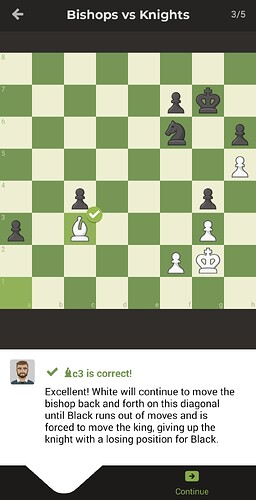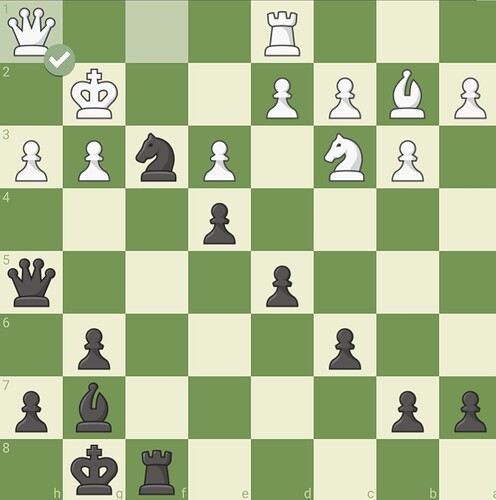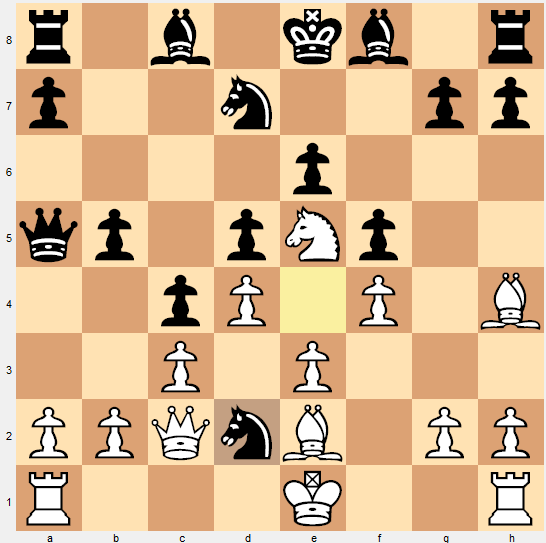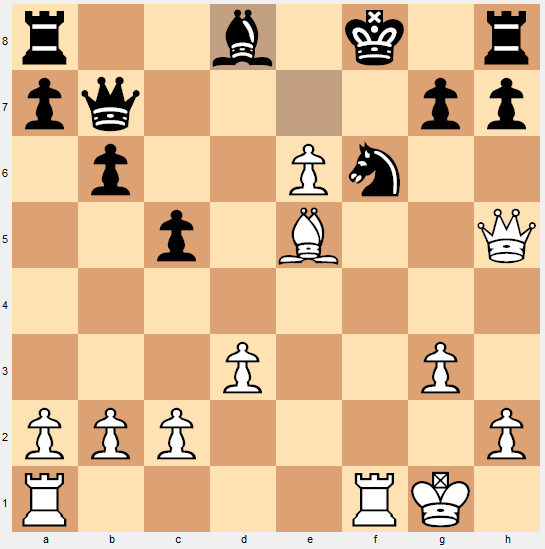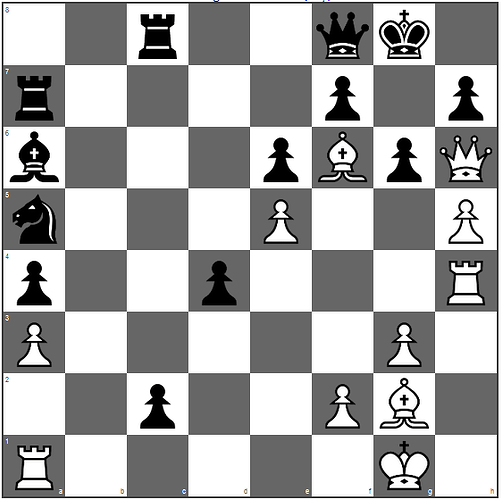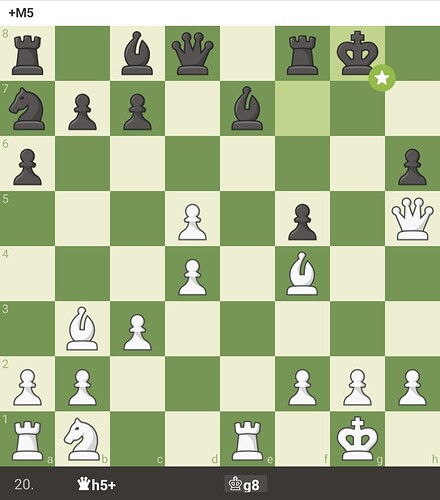I play chess.com sometimes. And the AI plays sometimes like a GM and sometimes like a complete idiot.
I don’t know that I ever played the computers; always thought it was more satisfying to play against real people, especially if they were in the mood to chat or rematch…
I’m not for chatting while playing chess and not for rematch.
But the true reason why I play against computer is because I’m so bad/weak. For example I constantly loose the queen or a rook. Not because I don’t understand the threats but because I’ve a concentration issue.
Also most chess players are ELO 1050 or higher, which is way too good/strong for me.
That happens all the times, to everybody. Here’s a sample:
Check out move 16-18, and I’m thinking, “What would cause somebody to do that?” But the blunder felt natural, whereas a computer would feel artificial.
I still don’t think normal players don’t have my problem. Because I have it more than 50 percent of my games. But I know the remedy: Training long-term concentration by playing matches (in contrast to game theory, tactics puzzles, opening learning, endgame learning etc.)
BTW is it called a “match”? Or simply a “game”?
A “match” would be a sequence of games between the same two players, I believe (winning a game gives a point, a draw gives each player a half-point, losing gives you no points)? So you’d play several games to try to even out the ups and downs of someone playing uncharacteristically well or poorly in any one game, and then add up the points to see who won the match.
A thanks. In German a single chess game is called a “Partie”. It’s interesting to see the different chess termini in different languages.
For example these names exist in German (I translate them literally to English) :
- knight: jumper
- bishop: runner
- queen: lady
- pawn: farmer
I think it’s funny. XD
Another game with brilliant move. Interestingly, the computer marked a missed opportunity, but it was on move 10 f5, instead of the latter missed moves. And I got a blunder at the end, too. ![]()
Here’s the board. What will you do? Black to move and win.
Here’s the actual game. I got rated as 2200.
What do you think?
I can’t view the game because chess.com is slooow on my mobile phone.
If I analyzed it correctly: Knight onto h4 gives the white king the choice of three ways to die immediately. Edit: 2. h4x gives a turn but won’t help much…
2200 is really not bad ![]() !
!
Great answer! Actualky Kh2 isn’t an outright mate, but I’d still get the Queen and win in the end. Kg1 is the next move. And I fumbled this one. Oops.
Yeah, it’s so tough, when you’re pretty sure you have a winning attack, and you know you should be playing for mate or an overwhelming material advantage, and you’re not sure how hard to look. And yeah by you I mean me. Sometimes I say “aha! A pawn! That’s good enough!” Which is usually enough, except when it isn’t and I realize I could’ve won more.
Tactics like on move 48 … well, they can slip through and that doesn’t change the things you did right. It’s fun when I can sneak that past an opponent but of course it hurts when it happens to me!
Speaking of tactics found and missed, here’s a really short neat game from the Chessable Trompowsky tactics course.
Janowski-Michel 1926 seems like the sort of game that should make you fear the Trompowsky, right? Black assumes White has to take back, but as Levy Rozman says, “chess isn’t checkers.”
It’s a neat tactic position from Black’s 12th, but I found it amusing there were two tactial opportunities in the game.
1. d4 Nf6 2. Bg5 d5 3. e3 e6 4. Bd3 c5 5. c3 Nbd7 6. f4 Qb6
7. Qc2 c4 8. Be2 Ne4 9. Bh4 f5 10. Nf3 Qa5 11. Ne5 b5 12. Nd2
Nxd2
The solution? 13. Bh5+ g6 14. Nxg6 Nb6 15. Ne5# 1-0
But wait! White messed up earlier and could have gotten burned! This is a tough one to see.
7. …Ng4! wins the e-pawn, because 8. Qe2 Nxe3 9. Qxe3 Qxb2 and the rook is trapped.
Just another example of how aggressive chess, even at the higher levels, can make your opponent blink and you have to be perpetually on the outlook for this sort of thing and develop a radar for hidden resources … both when you think you have a won game and when you’re hopelessly lost!
Interesting board constellation! So many moves already made and not a single pawn gone!
I didn’t see the bishop move. I generally don’t see the diagonal moves very well. My speciality are the pawns and the knights, but definitely not the bishops.
Janowski was famous as bishop lovers, so I know to check. Hikaru likes knight. I like king, myself. There was a period where I tend to push the king ahead of other pieces!
Today I want to drop a couple of King’s Indian Attack games. One is famous, one is not. These are from FM Kamil Plichta’s free King’s Indian Attack course on chessable.
1.e4 e6 2.d3 d5 3.Nd2 c5 4.Ngf3 Nc6 5.g3 b6 6.Bg2 dxe4
7.Nxe4 Bb7 8.Bf4 Be7 9.Ne5 Nxe5 10.Bxe5 Kf8 11.O-O Qd5 12.f4 f5
13.Bf3 fxe4 14.Bxe4 Qd7 15.f5 Nf6 16.fxe6 Qc8 17.Bxb7 Qxb7 18.Qh5 Bd8
It looks like Black’s been playing sensibly enough, and they just about have everything defended!
Solution: 19.Bd6+ Kg8 20.Qe8+ Nxe8 21.Rf8# or not.
The other game is more famous: Fischer vs Llhamsuren Myagmarsuren. I’ve played through it so many times, I’m pretty sure have the spelling of “Myagmarsuren” nailed down!
Myagmarsuren is still alive. He may be sick of seeing this game, especially as it’s been picked apart as to how Black could have defended better. But I guess it is a claim to fame of sorts.
There are different tactics at the end, but the idea is the same – White builds up an initiative, and Black keeps having to do things to avoid material loss. Then, boom!
Maybe a lot of you have seen it, too, but for those that haven’t, I think it’s generally entertaining.
1. e4 e6 2. d3 d5 3. Nd2 Nf6 4. g3 c5 5. Bg2 Nc6 6. Ngf3 Be7
7. O-O O-O 8. e5 Nd7 9. Re1 b5 10. Nf1 b4 11. h4 a5 12. Bf4 a4
13. a3 bxa3 14. bxa3 Na5 15. Ne3 Ba6 16. Bh3 d4 17. Nf1 Nb6
18. Ng5 Nd5 19. Bd2 Bxg5 20. Bxg5 Qd7 21. Qh5 Rfc8 22. Nd2 Nc3
23. Bf6 Qe8 24. Ne4 g6 25. Qg5 Nxe4 26. Rxe4 c4 27. h5 cxd3
28. Rh4 Ra7 29. Bg2 dxc2
Oh no! The pawn’s about to queen! Or is it? 30. Qh6 Qf8 31. Qxh7+ and Be4# or Rh8# follows.
ETA: Thanks Rovarsson for catching the unclosed spoiler tag so quickly!
…pssst, you missed a closing spoiler “/” in the solution for the first game…
First diagram: On first glance I thought: This is easy. Qf7# mate. But I oversaw the black queen.
Second diagram: You made a very small mistake. You list the turns up to turn 29. But the diagram is before the move 31. Edit: This game ending is a case of “Sometimes attack is the best defense.”
Need hxg6+ on the second one?
That King attack reminds me of this game. Too bad my mating skill isn’t up to par.
So, this is the game
I still mate, but roundabout way…
Yeah, but it worked. And that counts.
Theoretically it seems to me that 21. d6+ would have been the the beginning of the end. (But I doubt that I would have seen that move under time pressure.) Edit: I guess the queen would be even faster.
